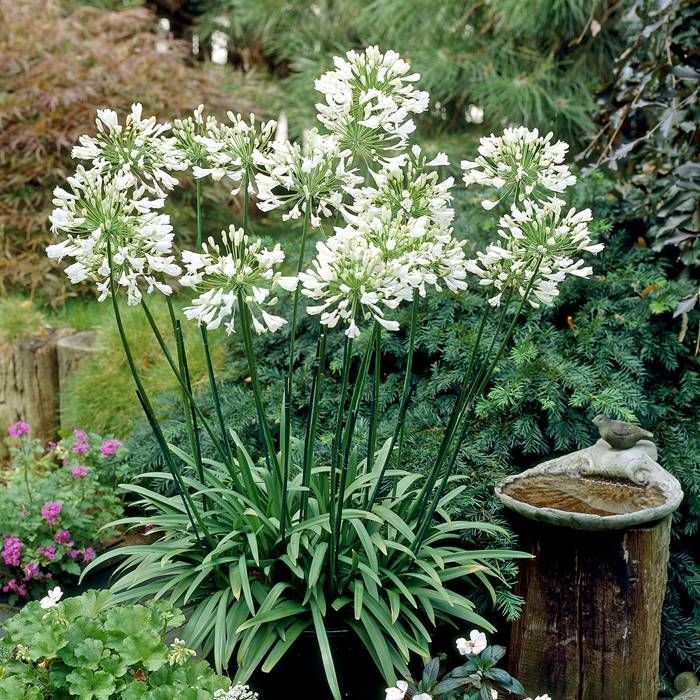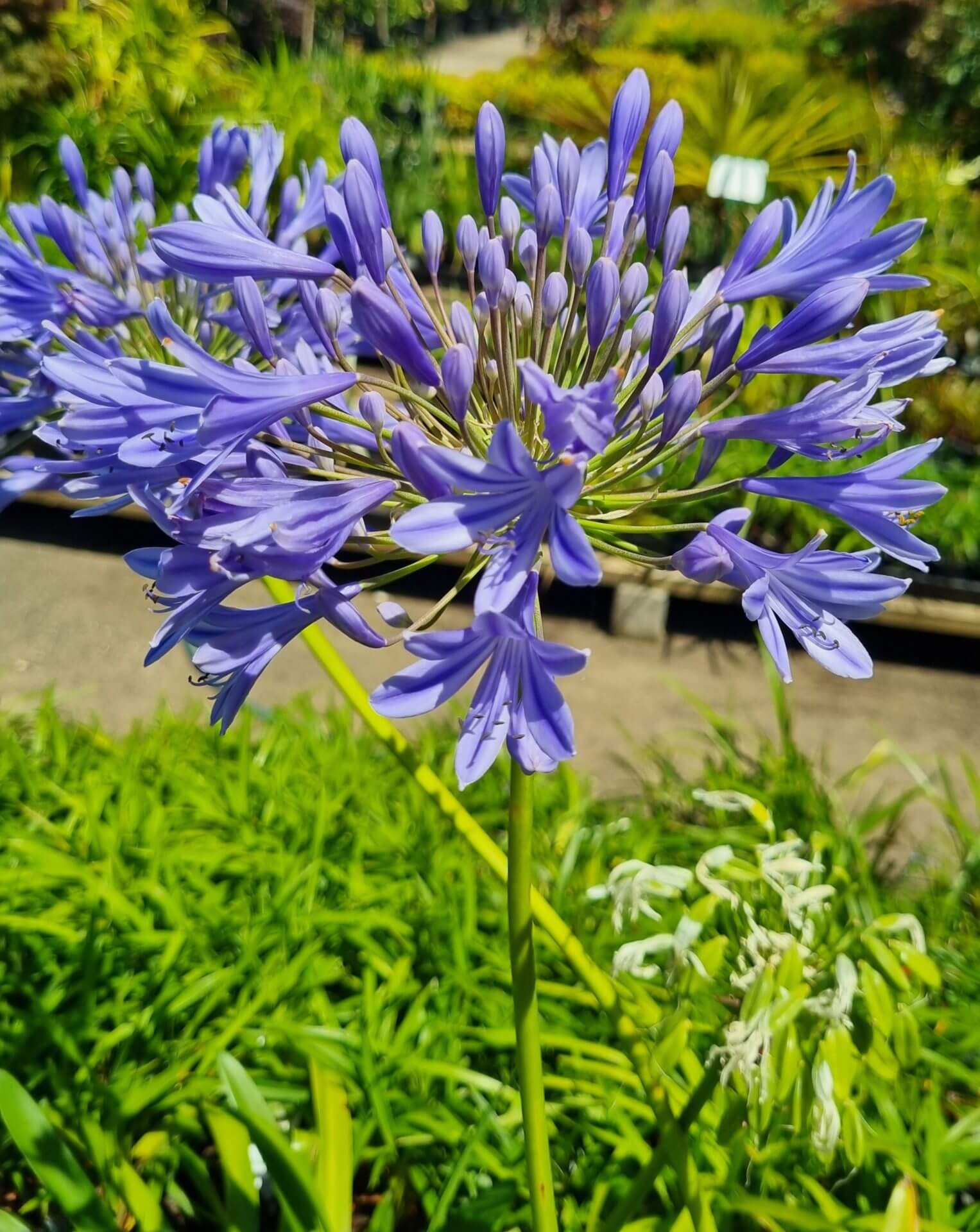Seasonal Agapanthus Treatment: Getting Ready For Winter Season and Summer season
Seasonal Agapanthus Treatment: Getting Ready For Winter Season and Summer season
Blog Article
Mastering the Art of Agapanthus Care: Necessary Steps for Healthy And Balanced Growth and Vivid Blooms
In the realm of cultivation, the cultivation of agapanthus stands as a rewarding venture for those that look for to nurture these sophisticated blooming plants. With their striking blossoms and graceful foliage, agapanthus has actually recorded the interest of garden enthusiasts worldwide. Nonetheless, attaining optimum growth and dynamic blossoms calls for a nuanced strategy that incorporates numerous essential actions. From choosing the appropriate selection to grasping trimming methods, the trip in the direction of growing prospering agapanthus plants is diverse and holds the essential to unlocking the complete capacity of these herb gems.

Selecting the Right Agapanthus Range

When picking the best Agapanthus variety for your garden, consider factors such as environment viability, bloom color, and growth routine. Agapanthus, generally called Lily of the Nile or African lily, is available in a variety of shades ranging from tones of purple and blue to white. Choose a bloom color that enhances your existing garden scheme to develop a harmonious landscape. Furthermore, think about the environment in your area to make sure the Agapanthus range you choose can grow in your specific conditions. Some varieties are extra tolerant of cool temperatures, while others prefer warmer environments. Recognizing the development behavior of various Agapanthus varieties is important for appropriate positioning within your yard. Some ranges have a clumping growth routine, suitable for containers or borders, while others have an even more spreading nature, suitable for ground cover or mass plantings. By carefully evaluating these factors, you can choose the ideal Agapanthus variety to enhance the appeal of your garden.
Ideal Growing Conditions
Taking into consideration the ideal ecological demands is important for successful Agapanthus farming. Agapanthus plants are delicate to cold temperature levels and should be shielded from frost during wintertime months.
To make sure healthy growth and dynamic flowers, plant Agapanthus light bulbs at a depth of regarding 2-4 inches and space them 8-12 inches apart. Adding natural matter, such as garden compost, to the soil can boost water drainage and fertility, advertising robust origin growth. Mulching around the base of the plants helps retain dampness and subdues weed growth. Normal watering is important, specifically throughout the growing period, to maintain the dirt continually wet yet not saturated.
Watering and Feeding Tips
Maintaining correct moisture degrees and providing vital nutrients are crucial elements in the treatment routine for Agapanthus plants. When it comes to sprinkling Agapanthus, it is crucial to strike an equilibrium. These plants choose constantly damp soil however are prone to root rot if overwatered.
Fertilizing Agapanthus is crucial for advertising healthy and balanced development and prolific blossoms. Apply a balanced you could look here fertilizer, such as blog here a 10-10-10 formula, in the early spring as new growth emerges. Repeat this application every 6-8 weeks throughout the expanding period. Avoid too much fertilization, as it can result in lush foliage at the expenditure of flowers. Always adhere to the producer's directions for appropriate dilution and application techniques. By following these watering and fertilizing tips, you can guarantee your Agapanthus plants thrive and create vibrant, resilient blossoms.
Pruning Techniques for Agapanthus
Trimming Agapanthus plants at the appropriate times and with appropriate techniques is crucial for preserving their health and advertising ideal development and blooming. The suitable time to trim Agapanthus is in late winter months or early spring before new development arises. Begin by eliminating any type of yellowing or dead leaves near the base of the plant. Cut them as close to the ground as possible without damaging the arising shoots.
For flowered stems, wait up until the blossoms have withered and after that trim them back to the base. This not just cleans the plant's appearance however also motivates the development of brand-new blossom buds. Deadheading invested blossoms can additionally reroute the plant's energy right into generating even more flowers rather than establishing seeds. Nonetheless, if you wish to accumulate seeds for proliferation, leave some flowers to mature and dry on the plant.
Keep in mind to use tidy, sharp tools to make precise cuts and reduce the risk of presenting illness. Agapanthus. Regular pruning will certainly help keep your Agapanthus looking neat and healthy and balanced while ensuring an abundant display of stunning blossoms
Dealing With Usual Parasites and Conditions
After making sure correct trimming methods for Agapanthus, it is vital to deal with pop over here typical pests and illness that can affect the wellness and vitality of these plants. Agapanthus plants are typically hardy however can still succumb to specific concerns. One common pest that affects Agapanthus is the Agapanthus gall midge. This little, orange fly lays its eggs in the foliage, resulting in distorted development and flower buds that fail to open up. To battle this bug, trim and destroy any damaged plant parts and think about using insecticidal soap.
An additional typical problem is fungal fallen leave area, which offers as dark sores on the fallen leaves. To stop fungal illness, ensure good air blood circulation around the plants, prevent overhanging watering, and get rid of any infected fallen leaves without delay. Furthermore, Agapanthus plants can experience root rot if they are grown in improperly draining pipes dirt. To stop this, plant Agapanthus in well-draining soil and stay clear of overwatering. By being cautious and taking prompt action versus conditions and parasites, you can aid your Agapanthus plants thrive and produce lively blossoms.

Verdict
To conclude, grasping the art of agapanthus treatment involves picking the right variety, offering excellent growing conditions, appropriate watering and fertilizing, ideal pruning methods, and attending to usual insects and conditions. By adhering to these essential actions, you can guarantee healthy and balanced development and vibrant blossoms for your agapanthus plants. Remember to regularly check and keep your plants to advertise their overall wellness and longevity.
To guarantee healthy development and vivid blooms, plant Agapanthus bulbs at a deepness of regarding 2-4 inches and area them 8-12 inches apart. By following these watering and fertilizing pointers, you can ensure your Agapanthus plants thrive and create vivid, resilient flowers.
One usual parasite that affects Agapanthus is the Agapanthus gall midget. In addition, Agapanthus plants can endure from root rot if they are planted in badly draining pipes dirt. By complying with these necessary steps, you can ensure healthy and balanced development and vibrant blooms for your agapanthus plants.
Report this page